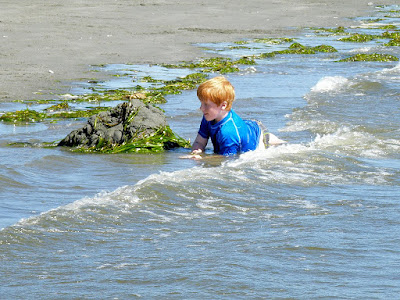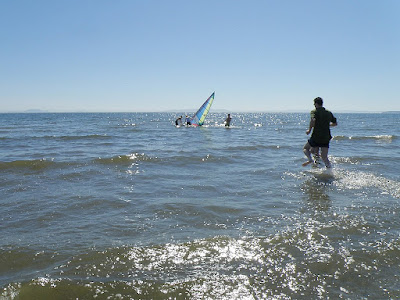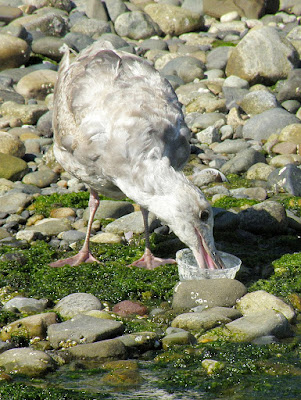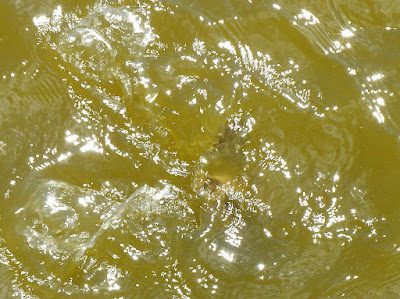What do you do on a hot Sunday afternoon in July, when the sun blazes down from a cloudless sky? In the Lower Mainland, everybody (well, almost everybody) heads for the beach.
We're no different. We joined the mob on White Rock beach.
Crowd on the beach, the pier, the promenade. Can't see the mass of shoppers and snack-seekers across the street. And snowy Mount Baker to create an illusion of coolness.
There are tide pools to dance in,
Sand castles to make.
I stopped to watch the waves lick at the base of this kid's pile of sand and eelgrass. "The tide's going to wash it away," I said.
"I know," he answered, slapping on another handful of sand.
His brother came up with another load. "Can't give up now!" We all laughed, and the boys bent back to their task.
Later on, we passed them again, farther up the beach:
"This one is going to last!" big brother said. "And look! Our other pile is still there!"
Sure enough, it was. Deep in a tide pool, slimmed down to a hand's width, and a few inches above the water, true. But it was still standing.
Some people headed, for coolness maybe, or for solitude, out to the blue water.
Sparkles
Lift that sail!
This guy's set up his three-room homestead. With a drydock.
Sails on the horizon.
Two lone waders. And a long, slow slope.
Blowing up the furniture.
This couple had a pair of comfortable seats that joined together to make a short sofa. The white object is a floating cooler for drinks, with drink holders in the lid.
Moving in.*
Two's company.
For beachcombers like us, there is always something to find:
A green-eyed gull.
A clowning gull, dancing from foot to foot. (Really just scratching his neck. Both sides.)
This gull found his own treasure. Pudding in a plastic cup. I wanted to remove it; I hate to see plastic left on the beach, but the gull objected. I left him to it, eventually.
"Mmmm, vanilla!"
A little red crab moult.
Coconut. We must be in the tropics!
This is the third coconut I've found in piles of seaweed cast up by the tides. Where do they come from? They sure don't grow here.
I say Hawaii, Laurie says, "Impossible!" But
where else?
The milk inside the coconut sloshes back and forth. I take it home and wash it. When it's completely dry, I'll open it up to see if it's still fresh.
Umbrella, chair, magazine. She needs a coconut with rum to make it perfect.
*Faces altered and blurred, in case of privacy issues.


















































